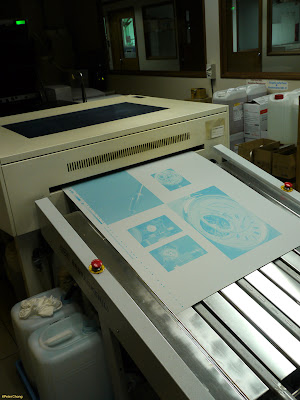So, what is Adobe InDesign? It is a powerful software in book-making process. It is a software that combine all the graphics (either been made by Adobe Photoshop etc.) and words. We always look at those shopping brochures of AEON Big, Giant, Mydin etc right? And we always read books or magazines (whatever topics, title you could think of) right? Guess what, they are made using this software. It is a new technology that has been introduced in Malaysia in 2007. Many advertising companies use this software. This software can produce either physical book, or virtual book that we call e-book.
My notes below would be random and I hope this little share could help you out there that might want to learn the basics of Adobe InDesign CS5.
What do we need to start?
- We can get Adobe InDesign if we install Adobe Master Collection or you can download the software from the Internet. According to the trainer, the latest version of Adobe InDesign is CS5.5 (version 7.5). I am using the trial version of Adobe InDesign CS5.0 (version 7.0) - this version is not too stable said the trainer.
- We need to know how our book will be published. This will need creativity of ourselves. Think of how many pages, whether it will have many graphics/pictures inside, what will the paper quality, how the binding of the book will be whether it will be thread binded or glued and other features that one could think about in publishing his/her book.
ADOBE INDESIGN - Inia's BASIC RANDOM TUTORIALS AND TIPS
1. CMYK for printing
CMYK is the basic colour being used in printing industry. What I remember was that if we want our book/ magazines/ brochures/ booklet been printed in these basic colours, the cost of production will not be as high as when using colours like gold or which ever colour that require combination of these four (4) basic colours.
2. CTP (Computer To Plate)

This is the plate maker (machine) before printing books.
What is CTP? It is a short form of Computer To Plate. When we are going to print copies of book that will have more than hundres pages or copies I guess, we need to have a plate that will print the digital form onto the papers. The plates will be used to print on the papers.
3. The BENEFIT of File>Save As to frequently saved files.

For files that always been opened, amended and saved frequently, it is strongly advisable to go to Menu > File > Save As and replace the existing file when finish our work. For your amazement, the file will be decreased in size. For example, a file that has the size of 1223 kb will be decreased to smaller size! Try it! ;)
4. Drag and Drop vs. Ctrl+C/V
It is better to Drag and Drop files to folders than Copy/Paste them because it will use computer memory if we always Copy/Paste. This can slow your computer down.
5. Zoom 100% = Ctrl+1
6. Zoom 200% = Ctrl+2
7. Basic Typography of measurement:
- 1 inch = 2.54 cm
- 1 inch = 25.4 mm
- 1 inch = 72 points (pt)
- 1 inch = 6 picas (p) ‘pronounced: 'pie-ka’– this is an old measurement (traditional, old measurement): Meant for Fonts & Column layout. Newspaper use picas to publish.
- SO: ===> 1 pica = 12 pt
8. To Import from doc document:
- 1 inch = 2.54 cm
- 1 inch = 25.4 mm
- 1 inch = 72 points (pt)
- 1 inch = 6 picas (p) ‘pronounced: 'pie-ka’– this is an old measurement (traditional, old measurement): Meant for Fonts & Column layout. Newspaper use picas to publish.
- SO: ===> 1 pica = 12 pt
Menu> File > Place > choose your .doc file.
9. A4 for New Document
It is advisabale to take A4 all the time for New Document.
10. Text Thread (click picture for larger view)
We can make continues text that been imported from .doc file been put in the boxes. The thread will be shown (you can go to Menu > View > Extras > Show Text Thread to make sure we have connect one box to the other box.
11. Fonts
For your information, to avoid error like Fonts we are using to print our book not available in certain computer, it is importnt to choose a 'universal' font that can be used in any computer with different Operating System (OS) like Windows or Mac. Open Font is universal (in the picture above it is 'o', 'a' (as in the picture above) - the red-coloured 'a' font that been circled is an Adobe type font and 'TT' font above is suitable for Mac and Windows user.
That's all for a simple note of Adobe InDesign. It is hard to put everything inside of this post as the practical part is very crucial. It is advisable for you who want to use this software to get a hands-on experience. Experience is the best teacher! ;D
That's all for a simple note of Adobe InDesign. It is hard to put everything inside of this post as the practical part is very crucial. It is advisable for you who want to use this software to get a hands-on experience. Experience is the best teacher! ;D




Inia, this is great sharing! Now everybody can write a book. Ah, the wonders of technology. Cannot wait for your first book!
ReplyDeleteTechnology nowadays is sure in advance. Even experienced advertising people find it takes time to get used to these technologies. In sha Allah, hope will publish one book soon!
ReplyDelete